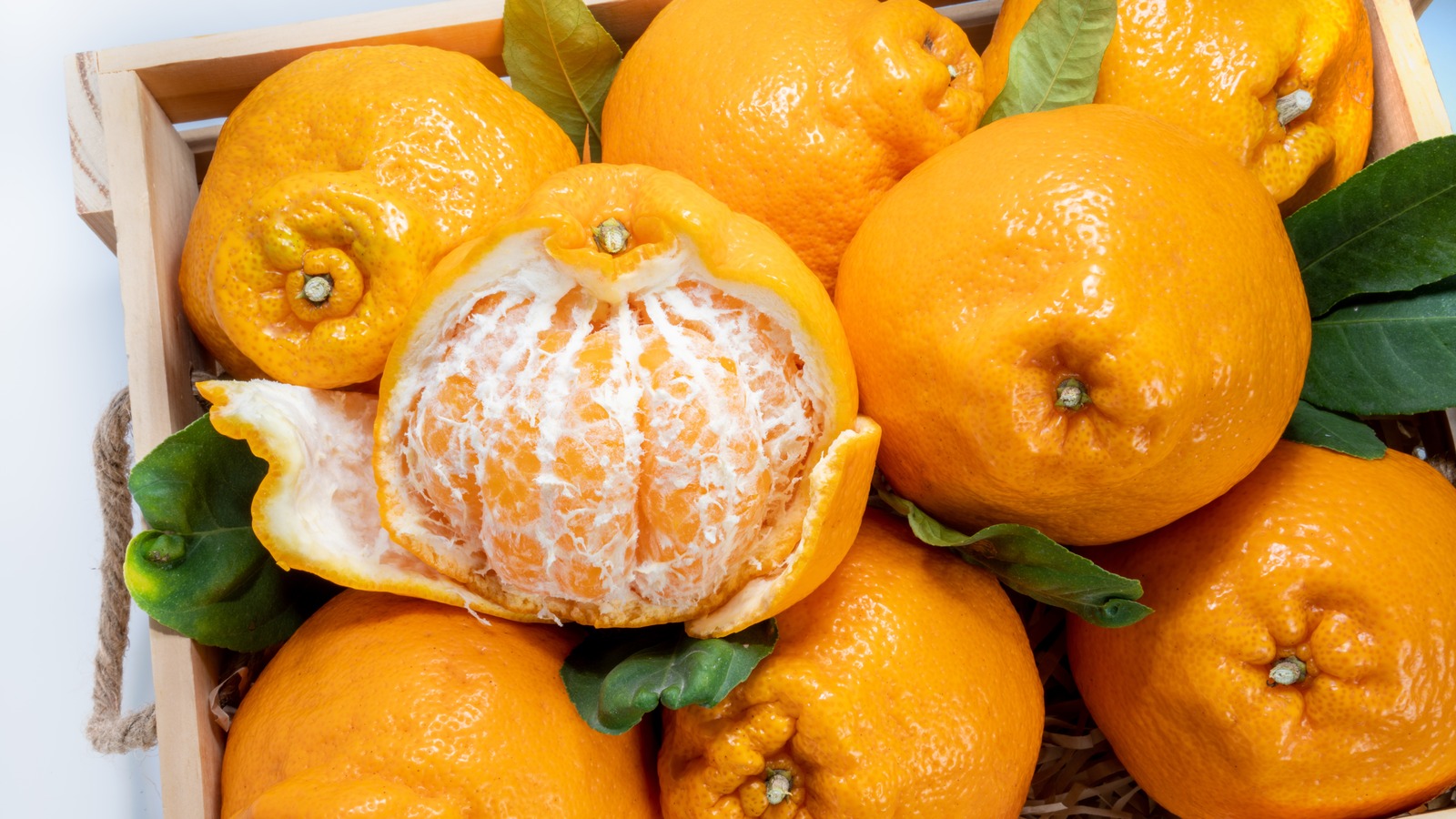Smaller than an orange, but larger than a mandarin, Sumo citrus are easily identified by their distinctive bump, which resembles the top knots traditionally worn by Japanese Sumo wrestlers — a characteristic that inspired the name. Sumo citrus features an orange, pomelo, and mandarin hybrid which hit its stride in the States when Whole Foods began carrying it in 2011. Sumo citrus stands out as more unique and expensive than other popular, higher-end fruits such as Honeycrisp apples, where the demand outweighs the supply. Due to its limited growing season, and the extra care required for its cultivation and harvest, Sumo citrus prices can get rather exorbitant.
While approximately $4 to $6 per pound might seem extravagant, getting Sumo citrus from the orchard to your local grocer requires quite a labor-intensive process. Everything has to be done by hand, from pruning the trees to wrapping the growing fruit in clay to protect its delicate skin from the California sun. At harvest, the fruits are hand-picked and packed into pallets; Sumo citrus, especially its distinctive bump, is prone to bruising. Only available from January to April, seedless, easy-to-peel, mandarin-orange, sweet Sumo citrus still flies off produce shelves regardless of the cost.
The sweet history of Sumo citrus
Sumo is actually the brand name for the shiranui citrus, or Dekopon (another brand name), as it’s marketed in Japan where it was originally hybridized in 1972. In an effort to create a sweet, delicious citrus that was seedless and easy to peel, Dekopon was born at a government fruit research station in Nagasaki Prefecture in Japan. Though there were several unsuccessful attempts to smuggle the fruit to the United States, the Griffith family bought the rights to the Dekopon budwood and with help from San Joaquin Valley growers, cultivated and released the first Dekopon crop grown stateside, in 2011.
While it originated in Japan, Dekopon is also grown as Sumo citrus in San Joaquin Valley, California and Southern regions of Australia. In the highlands of São Paulo, Brazil, it’s known by its brand name, Kinsei, and in South Korea, Dekopon is dubbed hallabong and is grown mostly on Jeju Island. Regardless of where it’s grown or what it’s called, this unique hybrid is worth trying at least once. But due to its short window of availability, you have to catch them before they’re gone! Slice up Sumo citrus as your secret weapon for bright, juicy coleslaw, consider using citrus zest to level-up chocolate chip cookies, or just pop the juicy, sweet segments right into your mouth, as there’s no bad way to enjoy them.





